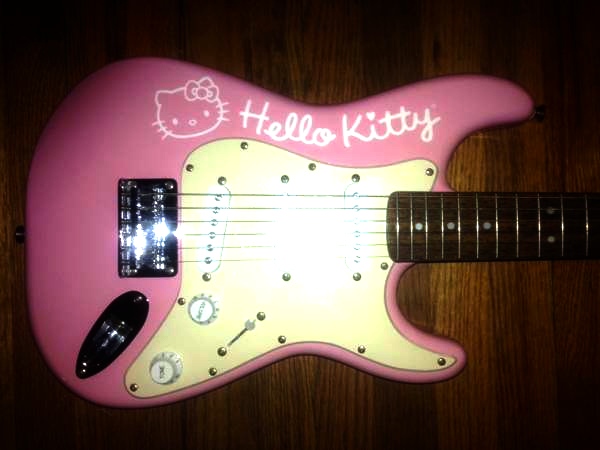Home › Forums › Software and Equipment › Passive direct box tone comparisons vs cost
Tagged: direct box, foh, impedance matching
- This topic has 5 replies, 4 voices, and was last updated 6 years, 7 months ago by
 rightonthemark.
rightonthemark.
-
AuthorPosts
-
-
August 26, 2017 at 12:22 pm #22168
 superblondeKeymaster
superblondeKeymasterWhen I do open mics or etc, then it would be good to bring a direct box, because it seems the sound guy does not have one. (For connecting mp3 player, or my drum pedal, or my mini amp via phones out, to the board. Yes, multiple sound guys have complained and moaned to me that they don’t have a 1/8″ TRS to 1/4″ TS adapter for their mixer. Even though I consider that to be their responsibility.)
So I have considered building a passive direct box to handle situations. Maybe even build one into the underside of a pedal board. These are the simplest devices possible to build diy. They’re just a set of jacks and an impedance matching transformer in the middle, and maybe a switch to disconnect the ground pin on the output connector. The transformers are literally just wire wrapped around a core. There’s not much magic in that (other than choosing the correct turns ratio). Except for their price:
A Jensen transformer for a direct box costs about $73 (qty:1). A Lundahl is $58. A Cinemag is $46. Just for the transformer. Some passive direct boxes are only like $15 for a finished product, so those transformers must cost under $2.
For a complete finished new passive direct box, the most inexpensive ones cost $10.. vs the high end ones costing $300 ! For a metal box of connectors and a transformer?
Is there any informed opinions out there about the quality of these transformers vs their price tag? Pipeline are you out there?
$2 transformer vs. $73 transformer ?!
I'm an intermediate student of Metal Method. I play seitannic heavy metal. All Kale Seitan! ♯ ♮ ♭ ø ° Δ ♩ ♪ ♫ ♬
And on the Seventh Day, Mustaine said: ∇ ⨯ E = - ∂B / ∂t ; and there was Thrash; and it had a ♭3; and it was good. -
August 26, 2017 at 3:06 pm #22169
 Doug MarksKeymaster
Doug MarksKeymasterI don’t know about the transformer but it’s always handy to have an assortment of 1/4″ adapters for your own personal use. The only time I use a direct in transformer is when I want to split the signal to have a recording of the clean guitar without effects to re-amp later.
Metal Method Guitar Instructor
-
August 26, 2017 at 4:19 pm #22170
 superblondeKeymaster
superblondeKeymasterYes… also at one open mic where the sound guy was a temporary guy (and getting drunker as the night wore on, with his white wine), after grumbling about it, he went to go find me an adapter and eventually came back with what I expected, 1/8″ TRS stereo (my side) to dual 1/4″ TS (his side) which he plugged in, it was a short cable about 2′. After I played 1 song, I noticed hum started in the PA. So I reached over to the audio cable which had snaked closer (because of his newly refilled wine glass… sigh) to the mixer board’s AC jack/chord, and moved it away from the AC. Hum disappeared and I played the rest of my songs without hum. So I guess the audio adapter cable was picking up hum from simply lying close to the AC stuff, since it wasn’t a balanced-wired adapter. (The hum was not an AC ground problem because my stuff is battery powered.)
I still find the “balanced” vs “unbalanced” terminology confusing but I think using a box, which has balanced output TS or XLR jacks, aka full ground shield for the length of the cables, instead of an adapter (usually does not have real ground shield) would force everyone into a correct setup therefore eliminate these kind of basic problems. I mean eliminate the hum problem not the wine problem. Hah.
I guess I could buy a length of high quality shielded cable, put the transformer in line with the cable, solder proper adapters on each end that fit my use, and have a “passive direct cable” instead of a “passive direct box”, that’s another option, which even eliminates the cost of buying the TS & XLR jacks. What is even crazier, for the cost of the highest end direct boxes, it is possible to buy a wireless unit instead and use it as a ‘wireless direct box’ (certainly adds audio artifacts but is OK for live use). Lowest cost Line6 wireless unit is under $150 now. Better than a $300 direct box maybe..
These sound guys and their grumbling over my setup is highly out of order. Because, there is always that one amateur rapper who comes in with his cell phone and wants to use a backing track from his phone plugged into the board, in order to rap over. Its the same cable.. yet they look at me with a guitar and some pedal they’ve never seen and are like “uhh what do you think I’m supposed to do with that? You cant just come in here and spring this on us. This is too custom for an open mic, you know.” (facepalm) One sound guy told me afterwards, I should just get an acoustic guitar like all the other guys. (Their songs.. didn’t rock. ha.)
I'm an intermediate student of Metal Method. I play seitannic heavy metal. All Kale Seitan! ♯ ♮ ♭ ø ° Δ ♩ ♪ ♫ ♬
And on the Seventh Day, Mustaine said: ∇ ⨯ E = - ∂B / ∂t ; and there was Thrash; and it had a ♭3; and it was good. -
August 27, 2017 at 8:08 pm #22173
 MotleyCrue81Participant
MotleyCrue81ParticipantHaha ya.. don’t turn into one of those 3 chord open mic acoustic hipsters haha. xD
Bring hair metal back!
-
August 28, 2017 at 11:43 am #22177
 Doug MarksKeymaster
Doug MarksKeymasterIt’s difficult for me to visualize this stuff. What you’re trying to do “sounds” overly complicated but as I said, difficult to visualize. One thing’s for sure, you need the correct adaptors. Don’t depend on the sound guy. I have cables and adapters coming out of my ears. Let me know what you need and I probably have thirty of them.
All kinds of things can cause line hum aside from two paths to ground. Fluorescent lights, and dimmer switches are often guilty. It sure sounds like you should just be able to plug your setup directly into a mixing channel or two. Usually the backing tracks use an auxiliary input.
As you’ve learned, don’t depend on the soundman for anything. I don’t mean that in a negative way towards the sound man.
On another note, congratulations for performing live.
Metal Method Guitar Instructor
-
August 29, 2017 at 10:46 pm #22211
 rightonthemarkParticipant
rightonthemarkParticipantyour open mic experience has been different than mine.
i’ve experienced two types.
1) the acoustic hippster three chord thing. which is fine if that’s what you like. most of the musicians are cool. but there’s always that one person who says something like – oh wow how does he play that on a twelve strings? can you play a twelve string guitar? smh
2) a venue hires a band to host an open mic. the band will typically bring a badsic set up. small drum kit (4 or 5 piece); bass amp, guitar amp (sometimes two guitar amps); a few vocal mics. no elaborate pedal boards. they isially play a short opening set and then open it for other musicians to play. they typically ask guitarists to bring theirmown guitars and drummers to bring sticks and sometimes their own snare. but they provide amps and sound. if the band brings their own sound it’s likely they have just one direct box for the bass. that’s pretty typical of a sound guy plus maybe a spare. now days with bass amps having direct line outs the direct box is becoming obsolete. even some guitar amps like the boss katana have direct line outs. most sound guys are set up to mic guitar amps. if you have an out of the ordinary set up it would definitely be in your best interest to have all the cables and connectors you need. plus spares.
\m/
rock and roll ain't pretty; that's why they picked us to play it.
-
-
AuthorPosts
- You must be logged in to reply to this topic.
